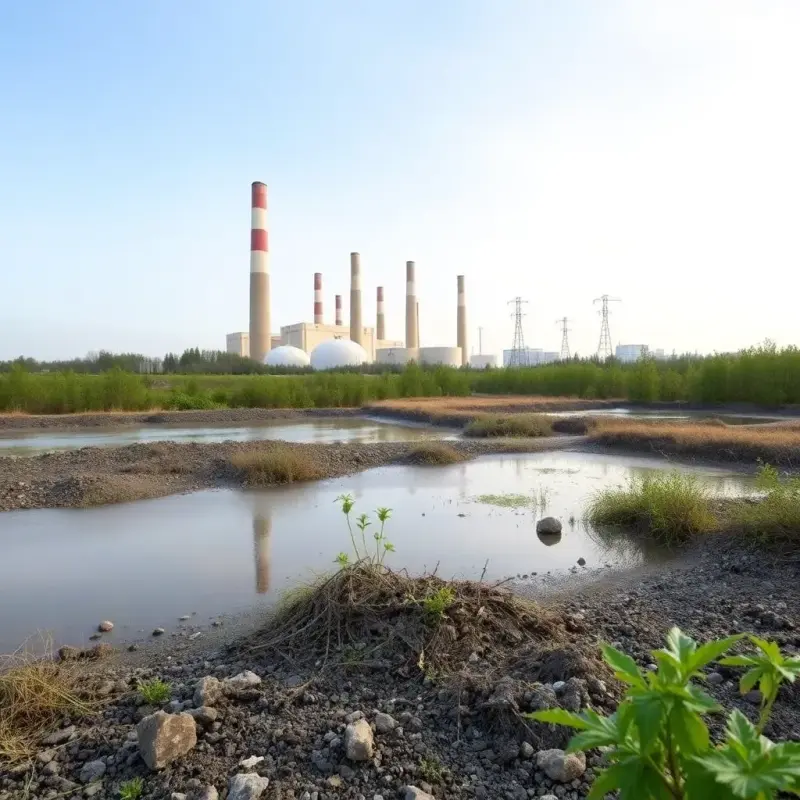Eco-Friendly Carbon Recycling Systems: How Technology Helps Reduce Emissions
Introduction
As climate change continues to be a critical global concern, the race to minimize carbon emissions is accelerating. Scientists and engineers are actively working to develop eco-friendly technologies for recycling carbon waste and curbing greenhouse gas emissions. These systems aim to capture and repurpose carbon dioxide (CO₂), transforming it from a liability into a valuable resource. In this article, we’ll explore how these technologies work and their role in reducing our carbon footprint.

The Urgency of Addressing Carbon Emissions
Global CO₂ emissions are among the most significant contributors to climate change. When released in large quantities, carbon dioxide traps heat in the Earth's atmosphere, leading to rising temperatures and associated environmental impacts such as melting ice caps, rising sea levels, and severe weather patterns. Thus, the development of effective carbon management technologies is not just a scientific challenge but also an environmental imperative.
How Carbon Recycling Works
Carbon recycling technologies aim to capture CO₂ emissions at their source, typically from industrial facilities or power plants, and convert it into usable products. This process often involves three primary steps: capture, conversion, and utilization.
-
Capture: The first stage involves extracting carbon dioxide from exhaust gases. This can be done using techniques like chemical absorption, physical adsorption, or membrane filtration. These methods ensure that a substantial portion of CO₂ is captured before it is released into the atmosphere.
-
Conversion: Once the CO₂ is captured, it needs to be transformed into a form that can be reused. Conversion technologies employ chemical reactions to turn carbon dioxide into materials like fuels, polymers, or building materials. For example, CO₂ can be combined with hydrogen to produce synthetic fuels or used as a raw material for creating carbonates used in construction.
-
Utilization: The final step involves finding practical applications for the recycled carbon products. These applications can range from manufacturing eco-friendly concrete to creating sustainable fuels. This utilization reduces the need for raw materials derived from fossil fuels, closing the carbon loop and promoting a circular economy.
Key Technologies in Carbon Recycling
1. Direct Air Capture (DAC)
Direct Air Capture is a cutting-edge technology designed to remove CO₂ directly from the atmosphere. DAC systems use fans to draw in air, passing it through chemical filters that capture carbon dioxide. The captured CO₂ can then be stored underground or repurposed into various products. Companies like Climeworks and Carbon Engineering are pioneering efforts in this space, creating scalable solutions for large-scale carbon removal.
2. Bioenergy with Carbon Capture and Storage (BECCS)
BECCS integrates biomass energy generation with carbon capture and storage. Plants naturally absorb CO₂ from the atmosphere as they grow. When these plants are used to produce bioenergy, the CO₂ emissions generated during combustion are captured and stored underground, effectively resulting in negative emissions. This technology not only provides a renewable energy source but also helps reduce overall carbon levels in the atmosphere.
3. Carbon-to-Value Technologies
Emerging innovations are turning captured CO₂ into valuable products, a field often referred to as Carbon-to-Value (C2V). Examples include:
- Concrete Production: CarbonCure Technologies infuses captured CO₂ into concrete, making the material stronger while permanently storing the carbon.
- Synthetic Fuels: Companies like LanzaTech use microbes to convert CO₂ and industrial waste gases into ethanol, which can be used as a sustainable fuel source.
Environmental and Economic Benefits
Adopting carbon recycling systems provides a dual advantage: environmental protection and economic opportunity. By reducing the amount of CO₂ released into the atmosphere, these technologies can significantly mitigate climate change impacts. Moreover, converting waste carbon into valuable products creates new revenue streams, encouraging industries to invest in sustainable practices.
- Reducing Greenhouse Gas Emissions: One of the most immediate benefits is the reduction of CO₂ emissions. This helps slow global warming and lessens the adverse effects on ecosystems and human societies.
- Promoting a Circular Economy: By recycling carbon waste, industries can create a circular economy where emissions are continually repurposed, reducing the dependency on virgin raw materials.
- Driving Innovation and Job Creation: The rise of carbon recycling technology is spurring innovation and creating jobs in fields like renewable energy, chemical engineering, and environmental science.
Challenges and Future Outlook
While carbon recycling technologies hold great promise, they are not without challenges. High initial costs, energy consumption, and scalability remain hurdles to widespread adoption. Additionally, regulatory and policy frameworks must evolve to incentivize businesses to invest in these systems. Continued research and development, supported by government policies and private investments, are crucial to overcoming these barriers.
Looking forward, advancements in material science and energy efficiency are likely to make carbon recycling more feasible and cost-effective. As technology improves, we can expect a greater impact on reducing emissions and achieving climate goals.
Conclusion
Eco-friendly carbon recycling systems are a vital part of the solution to climate change. By capturing and repurposing carbon dioxide emissions, these technologies can help create a more sustainable and resilient future. While there is still much work to be done, the progress made so far demonstrates that innovation can lead the way in addressing one of the planet's most pressing challenges.
By adopting and supporting these advancements, we can make meaningful strides toward reducing our carbon footprint and protecting the environment for future generations.
Articles
Inscrivez-vous à nos notifications pour recevoir les dernières actualités et articles directement dans votre boîte de réception.